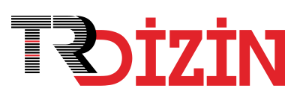Araştırma Makalesi
Sayı Editör Kurulu


Lisans ve yüksek lisans eğitimini Marmara Üniversitesi'nde Halkla İlişkiler ve Tanıtım alanında yaptı.
Doktorasını da yine aynı alanda Selçuk Üniversitesi'nde tamamladı. Kamu diplomasisi, iletişim sosyolojisi, yeni medya ve tüketim kültürü alanlarında çalışmalar yapmaktadır.

Amaç ve Kapsam
Aksaray İletişim Dergisi, iletişim bilimlerinin her alanında bilimsel niteliklere sahip çalışmaları yayımlayarak bilgi birikimine katkıda bulunmayı amaçlayan ulusal ve uluslararası hakemli bir dergidir. Kendi alanında bilimsel araştırma, yöntem ve modeller kullanılarak hazırlanmış, alanında bir boşluğu dolduracak, araştırmaya dayalı özgün çalışma koşullarını taşımalı ve daha önce herhangi bir yerde yayınlanmamış olmalıdır. Daha önce yayınlanmış bir yazıyı değerlendiren, eleştiren, bu konuda yeni ve dikkate değer görüşleri ortaya koyan araştırma veya inceleme olmalıdır. Dergide ayrıca bir kavramın ya da teorinin tartışıldığı, eleştirildiği ya da açıklandığı türden araştırma, tam metin olarak yayınlanmamış bildiri, biyografi ve derleme makalesi, bilimsel alana katkı niteliğindeki çeviri ve kitap eleştirisi de olabilir.
Yazım dili Türkçe ve İngilizcedir.
- Kendi alanında bilimsel araştırma, yöntem ve modeller kullanılarak hazırlanmış, alanında bir boşluğu dolduracak, araştırmaya dayalı özgün çalışma koşullarını taşımalı ve daha önce herhangi bir yerde yayınlanmamış olmalıdır. Daha önce yayınlanmış bir yazıyı değerlendiren, eleştiren, bu konuda yeni ve dikkate değer görüşleri ortaya koyan araştırma veya inceleme olmalıdır. Dergide ayrıca bir kavramın ya da teorinin tartışıldığı, eleştirildiği ya da açıklandığı türden araştırma, tam metin olarak yayınlanmamış bildiri, biyografi ve derleme makalesi, bilimsel alana katkı niteliğindeki çeviri ve kitap eleştirisi de olabilir.
- Yazım dili Türkçe ve İngilizcedir.
Yazım Kuralları
MAKALE YAYIN KURALLARI
Aksaray İletişim Dergisi, iletişim bilimleri ile ilgili derleme, araştırma makaleleri, teorik ve kuramsal makaleler, kitap tanıtımı vb. yazıların yer aldığı akademik ve hakemli bir dergidir. Dergi Temmuz ve Ocak aylarında olmak üzere yılda iki kez yayınlanır.
Yayınlanmak üzere dergiye gönderilen yazılar daha önce hiçbir yerde yayınlanmamış ya da yayınlanmak üzere başka bir yere gönderilmemiş olmalıdır. Yazının, kongre, sempozyum veya bir toplantıda bildiri şeklinde sunulmuş olması yayınlanması için engel değildir.
Makaleler en az iki hakemin olumlu raporuyla yayınlanır.
Derginin yazı dili Türkçe ve İngilizce'dir. Ancak, Almanca, Rusça, Arapça, Farsça ve Fransızca dillerinden herhangi biri ile yazılmış yazıların yayınlanması yayın kurulunun kararına bağlıdır.
Dergiye, yayınlanması için gönderilen yazılar, dergi kurallarına göre uygun bir şekilde düzenlenmeli, dergi web sayfasından üyelik işlemleri yapılmalı ve bu üyelik sayfasından gönderiler gerçekleştirilmelidir.
Dergiye gönderilen yazıların tüm hukuki sorumlulukları yazarlara aittir. Dergi sorumluluk kabul etmez.
Yayınlanan yazıların her türlü telif hakkı, Aksaray İletişim Dergisi' ne aittir. Ayrıca yazarlara telif ücreti ödenmez.
Yayımlanması için gönderilen çalışmaların, akademik yazım kurallarına uyularak hazırlanmış olması şarttır.
Makale sürecindeki tüm gelişme ve sonuçları online olarak çalışmayı gönderen yazara bildirilir. Bilimsel Araştırma Yöntemleri esaslarına göre hazırlanmış çok başarılı çalışmalar editör kararıyla da yayınlanabilir.
Yayınlanmak üzere Aksaray İletişim Dergisi' ne gönderilen çalışma önce editör tarafından incelenir, daha sonra yayın kurulunun görüşüne sunulur ve yayın kurulunun olumlu görüşünden sonra incelemesi için hakemlere gönderilir. Hakem incelemelerinden geçmiş, yazarı tarafından gerekli eksikleri giderilmiş çalışmalar yayın sırasına alınır ve ardından yayınlanır.
Makalelerin inceleme süreci kör hakem tekniğine göre yürütülmesi nedeniyle yükleme yapılacak makalelerde yazarlara ait ya da çalışmanın yazarını açığa çıkaracak nitelikte çalışma başlığına ait her hangi bir bilgiye yer verilmeyecek. İlgili çalışmanın hakem süreci tamamlandıktan sonra yazar ya da çalışma ile ilgili bilgiler eklenecektir. Çalışmanın tez özeti, sunulmuş bir bildiri vs. olması durumunda editör mesajla bilgilendirilmelidir.
Yüksek lisans ve Doktora tez özetlerinin yayınlanmasında ilgili çalışmanın daha önce bir jüriden geçmiş olması nedeniyle dergi yayım kapsamı ve yazım kurulları gereğince editörlük tarafından yapılan inceleme sonrası uygun görüldüğünde, hakeme değerlendirmesine gönderilebilir. Olumlu değerlendirmeden sonra özetler yayımlanabilir.
Makale gönderimi esnasında yazar ya da yazarlar için özgeçmiş hazırlanmalı (word ya da pdf) ve ek dosyalar bölümüne yüklenmelidir.
Yazım Kuralları
1. Aksaray İletişim Dergisi, iletişim bilimleri ile ilgili inceleme, düşünce, uygulamaya dayalı araştırma vb. nitelikli yazıların yer aldığı akademik ulusal/uluslararası hakemli bir dergidir. Dergiye gönderilen makaleler, yayın kurulunca ön değerlendirmeye alınır ve kurulca belirlenen en az iki hakemin olumlu raporuyla yayınlanır.
2. Aksaray İletişim Dergisi, Temmuz ve Ocak aylarında olmak üzere yılda iki kez yayınlanır.
3. Yazılar, bir yayın organında yayımlanmamış veya halen yayın aşamasında bulunmamış, özgün ürünler olmalıdır. Bu kurala; yazının kongre, sempozyum veya bir toplantıda bildiri şeklinde sunulmuş olması engel değildir. Yüksek lisans ve doktora tezlerinden türetilen çalışmalara yer verilmektedir.
4. Dergimiz yazı sitili Palatino Linotype'dır. Dergimize gönderilecek tüm çalışmaların Makale Şablonu kullanılarak gönderilmesi önem arz etmektedir. Makalenin başlığı ilk sayfanın başına sözcüğün yalnızca ilk harfleri büyük, bold (koyu) ve ortalı olarak Palatino Linotype yazı sitili ile 12 punto, alt başlıkları ilk harfler büyük olmak üzere sola yaslı 12 punto ve bold(koyu) ile yazılmalıdır. Makale gönderim sürecinde yazarın ismi bulunmamalıdır. Makale kabul edildikten sonra yazarın adı başlığın hemen altına sağa yaslı olarak 12 punto bold olarak dipnot şeklinde (Örneğin; Nezahat ALTUNTAŞ DUMAN) yazılmalı; yazar birden fazla ise adları alt alta gelecek şekilde ve sıra numarası birbirini takip edecek şekilde yazılmalıdır. Ayrıcı yazarın veya yazarların akademik ünvanı, görev yeri ve e-posta adresi sayfanın altında dipnot şeklinde 9 punto ile gösterilmelidir. (Örneğin; Arş. Gör. Aksaray Üniversitesi İletişim Fakültesi, efenumancan@aksaray.edu.tr)
5.Yazılar, A4 boyutundaki kağıdın sadece bir yüzüne, özet ve ana metin 12 punto harf karakteriyle ve Palatino Linotype fontuyla word belgesi olarak yazılmalıdır. Dergiye gönderilecek yazılar, MS Word Programı kullanılarak, ve 1 satır aralığında yazılmalıdır. Sayfanın üst, alt, sol ve sağ taraflarında 2,5’er cm’lik boşluklar olmalıdır. Paragraflar arası 0,6 aralığında fazladan boşluk (aralık/sonra/0,6nk) olmalıdır.
6. Yazalar, http://dergipark.gov.tr/aid adresinden sisteme giriş yaparak üye olmalıdır. Çalışmalarını bu sayfada yer alan sistem üzerinden ulaştırmaları gerekmektedir.
7. Yazarların unvanı ve görev yeri dipnotta gösterilmelidir.
8. Yazılar, özetler dahil en az 3500, en çok 10.000 sözcük olmalıdır.
9. Yayınlanmasına karar verilen yazılar, dergi web sayfasından pdf olarak sunulmaktadır.
10. Belirtilen ilkeler dahilinde yazıların sorumluluğu (yayında ilklik, kaynak doğruluğu, ileri sürülen görüşler vb.) yazarına aittir.
11. Yayınlanan makalelerin her türlü telif hakkı, Aksaray İletişim Dergisi’ne aittir.
12. Yazılarda 300 kelimeyi geçmeyen Türkçe ve İngilizce özet bulunmalı, özetin altında anahtar sözcükler (keywords) yer almalıdır.
13. Çalışmanın şu sırayı takip etmesi uygundur: Başlık, Özet, Anahtar Sözcükler, Yabancı Dildeki Başlık, Abstract, Keywords, Giriş, Ana Metin, Sonuç ve Kaynaklar.
14. Referans göstermede, metin için kaynak gösterme yöntemi olan APA’nın (American Psychological Association) 6. edisyonu kullanılmalıdır. Gerek alıntılamalarda gerekse de bibliyografya kısmında yazarlar, Amerikan Psikoloji Derneği’nin yayımladığı Amerikan Psikoloji Derneği Yayım Kılavuzu’nda belirtilen yazım kurallarını ve formatını takip etmelidir. APA6
Kaynakların Düzenlenmesi
1. Kaynaklar, ana metin içerisinde yazar soyadları, tarih ve sayfa numaraları yazılarak verilmelidir: (Aktan, 1996, s. 45) veya (Kalender ve Özodaşık, 1997, s. 63) gibi.
2. Yazarlar ikiden fazlaysa, ilk yazarın soyadından sonra “ve ark” ibaresi kullanılmalıdır: (Campbell ve ark., 1960, s. 28) gibi.
3. Gönderme yapılan kaynaklar birden fazlaysa, noktalı virgülle ayrılmalıdır: (Fiske, 1996, s. 72; Bostancı, 1995, s. 121; Bon, 1979, s. 3) gibi.
4. Kaynakçada sadece ana metinde gönderme yapılan kaynaklara yer verilmeli ve yazar soyadına göre alfabetik bir sıra izlemelidir.
5. Bir yazarın birden çok çalışması kaynakçada yer alacaksa yayın tarihine göre eskiden yeniye doğru bir sıralama yapılmalıdır. Aynı yılda yapılan çalışmalar için “a, b,c...” ibareleri kullanılmalı ve bunlar metin içinde yapılan göndermelerde de aynı olmalıdır.
6. Kaynakçada eserleri belirtme şekli aşağıdaki gibi olmalıdır.
WEB SAYFASI (Metin İçinde Gösterimi)
Yazar ve detaylı tarih biliniyorsa:
(Slat, 2019)
(Slat ve Worp, 2019)
Yazar ve sadece yıl biliniyorsa:
(Slat, 2019)
(Slat ve Worp, 2019)
Yazar biliniyor ama detaylı tarih ya da yıl bilinmiyorsa:
(Slat, t.y.)
(Slat ve Worp, t.y.)
Yazar bir kurum/organizasyon bilinmiyor ve detaylı tarih biliniyorsa:
(The Ocean Cleanup, 2019)
Yazar bir kurum/organizasyon ve sadece yıl biliniyorsa:
(The Ocean Cleanup, 2019)
Yazar bir kurum/organizasyon biliniyor ama detaylı tarih ya da yıl bilinmiyorsa:
(The Ocean Cleanup, t.y.)
Yazar bilinmiyor ama detaylı tarih biliniyorsa:
(“Whales Great Pacific”, 2019)
*Yazı başlığının ilk üç kelimesi tırnak içinde verilebilir.
Yazar bilinmiyor ama sadece yıl biliniyorsa:
(“Whales Great Pacific”, 2019)
*Yazı başlığının ilk üç kelimesi tırnak içinde verilebilir.
Hem yazar hem de tarih bilinmiyorsa:
(“Whales Great Pacific”, t.y)
*Yazı başlığının ilk üç kelimesi tırnak içinde verilebilir.
WEB SAYFASI (Kaynakçada Gösterimi)
Yazar ve detaylı tarih biliniyorsa:Slat, B. (2019, Nisan 10). Whales likely impacted by Great Pacific garbage patch. The Ocean Cleanup. https://www.theoceancleanup.com/updates/whales-likely-impacted-by-great-pacific-garbage-patch/ adresinden alınmıştır.
Slat, B. ve Worp, C. (2019, Nisan 10). Whales likely impacted by Great Pacific garbage patch. The Ocean Cleanup. https://www.theoceancleanup.com/updates/whales-likely-impacted-by-great-pacific-garbage-patch/ adresinden alınmıştır.
Yazar ve sadece yıl biliniyorsa:
Slat, B. (2019). Whales likely impacted by Great Pacific garbage patch. The Ocean Cleanup. https://www.theoceancleanup.com/updates/whales-likely-impacted-by-great-pacific-garbage-patch/ adresinden alınmıştır.
Slat, B. ve Worp, C. (2019). Whales likely impacted by Great Pacific garbage patch. The Ocean Cleanup. https://www.theoceancleanup.com/updates/whales-likely-impacted-by-great-pacific-garbage-patch/ adresinden alınmıştır.
Yazar biliniyor ama detaylı tarih ya da yıl bilinmiyorsa:
Slat, B. (t.y.). Whales likely impacted by Great Pacific garbage patch. The Ocean Cleanup. Ağustos 15, 2020 tarihinde, https://www.theoceancleanup.com/updates/whales-likely-impacted-by-great-pacific-garbage-patch/ adresinden alınmıştır.
Slat, B., ve Worp, C. (n.d.). Whales likely impacted by Great Pacific garbage patch. The Ocean Cleanup. Ağustos 15, 2020 tarihinde, from https://www.theoceancleanup.com/updates/whales-likely-impacted-by-great-pacific-garbage-patch/ adresinden alınmıştır.
Yazar bir kurum/organizasyon ve detaylı tarih biliniyorsa:
The Ocean Cleanup. (2019, Nisan 10). Whales likely impacted by Great Pacific garbage patch. https://www.theoceancleanup.com/updates/whales-likely-impacted-by-great-pacific-garbage-patch/ adresinden alınmıştır.
Yazar bir kurum/organizasyon ve sadece yıl biliniyorsa:
The Ocean Cleanup. (2019). Whales likely impacted by Great Pacific garbage patch. https://www.theoceancleanup.com/updates/whales-likely-impacted-by-great-pacific-garbage-patch/ adresinden alınmıştır.
Yazar bir kurum/organizasyon ama detaylı tarih ya da yıl bilinmiyorsa:
The Ocean Cleanup. (t.y.). Whales likely impacted by Great Pacific garbage patch. Ağustos 15, 2020 tarihinde, https://www.theoceancleanup.com/updates/whales-likely-impacted-by-great-pacific-garbage-patch/ adresinden alınmıştır.
Yazar bilinmiyor ama detaylı tarih biliniyorsa:
Whales likely impacted by Great Pacific garbage patch. (2019, Nisan 10). The Ocean Cleanup. https://www.theoceancleanup.com/updates/whales-likely-impacted-by-great-pacific-garbage-patch/ adresinden alınmıştır.
Yazar bilinmiyor ama sadece yıl biliniyorsa:
Whales likely impacted by Great Pacific garbage patch. (2019). The Ocean Cleanup. https://www.theoceancleanup.com/updates/whales-likely-impacted-by-great-pacific-garbage-patch/ adresinden alınmıştır.
Hem yazar hem de tarih bilinmiyorsa:
Whales likely impacted by Great Pacific garbage patch. (t.y.). The Ocean Cleanup. Ağustos 15, 2020 tarihinde, https://www.theoceancleanup.com/updates/whales-likely-impacted-by-great-pacific-garbage-patch/ adresinden alınmıştır.
Kitap
Akar, E. (2011). Sosyal Medya Pazarlaması: Sosyal Web'te Pazarlama Stratejileri. Ankara: Efil Yayınevi.
Aktan, E. (2017). Sosyal Medya ve Siyasal Katılım. Konya: Eğitim Yayınevi.
Çeviri Kitap
Briggs, A., & Burke, P. (2011). Medyanın Toplumsal Tarihi Gutenberg'den İnternet'e... (Ü. H. Yolsal, & E. Uzun, Çev.) İstanbul: Kırmızı Yayınları.
Editörlü Kitaplar
Eldeniz, L. (2010). İkinci Medya Çağında Etkileşimin Rolü ve Web 2.0. F. Aydoğan, & A. Akyüz içinde, İkinci Medya Çağında İnternet (s. 18-35). İstanbul: Alfa Yayınları.
Makaleler
Güçdemir, Y. (2003). Bilgisayar Ağları İnternetin Gelişimi ve Bilgi Kirlenmesi. İstanbul Üniversitesi İletişim Fakültesi Dergisi, 371-378.
Karaçor, S. (2009). Yeni iletişim teknolojileri, siyasal katılım, demokrasi. Yönetim ve Ekonomi: Celal Bayar Üniversitesi İktisadi ve İdari Bilimler Fakültesi Dergisi, 16(2), 121-131.
Khanzode, C. A., & Sarode, R. D. (2016). Evolution of The World Wide Web: From Web 1.0 To 6.0. International Journal of Digital Library Services, 6(2), 1-11.
Tezler
Işık, U. (2007). Medya Bağımlılığı Teorisi Doğrultusunda İnternet Kullanımının Etkileri ve İnternet Bağımlılığı. Konya: Selçuk Üniversitesi Sosyal Bilimler Enstitüsü Yayımlanmamış Doktora Tezi.
Bildiriler
Nath, K., & Iswary, R. (2015). What Comes after Web 3.0? Web 4.0 and the Future. Proceedings of the International Conference and Communication System (I3CS’15) (s. 337-341). India: Shillong.
İnternet
Wales, J. (2004, 07 28). Wikipedia Founder Jimmy Wales Responds. (Slashdot.org, Röportaj Yapan) 08 29, 2021 tarihinde https://slashdot.org/story/04/07/28/1351230/wikipedia-founder-jimmy-wales-responds adresinden alındı
Oxford. (2021). New Media. 05 08, 2021 tarihinde https://www.oxfordlearnersdictionaries.com/: https://www.oxfordlearnersdictionaries.com/definition/english/new-media?q=new+media adresinden alındı
Mayfield, A. (2008, 08 01). What is Social Media? 06 24, 2021 tarihinde https://icrossing.co.uk/sites/default/files_uk/insight_pdf_files/What%20is%20Social%20Media_iCrossing_ebook.pdf adresinden alındı
Etik İlkeler ve Yayın Politikası
Etik İlkeler
Aksaray İletişim Dergisi yayın etiğini en yüksek standartlarda uygulamayı ve Yayın Etiği ve Kötüye Kullanım Bildirgesinin aşağıdaki ilkelerine uymayı taahhüt eder. Bu bildirge Committee on Publication Ethics (COPE), Council of Science Editors (CSE), World Association of Medical Editors (WAME) ve International Committee of Medical Journal Editors (ICMJE) adlı kuruluşların dergi editörleri için geliştirdikleri öneri ve kılavuzlar temel alınarak hazırlanmıştır.
• Yayınlanmak üzere dergiye gönderilen yazılar daha önce başka bir dergide yayınlanmamış (bilimsel toplantılarda sunulmuş ve tam metin yayımlanmış bildiriler dahil) veya yayınlanmak üzere eşzamanlı olarak herhangi bir dergiye gönderilmemiş olmalıdır.
• Dergiye gönderilen yazılar, bir Editör ve en az iki hakem tarafından incelenmek suretiyle çift kör eş değerlendirme (double-blind peer review) sürecine alınır. Gönderilen yazıların herhangi bir aşamada, amaca yönelik bir yazılım aracılığıyla intihal açısından incelenebileceği hakkı saklıdır. Bu amaçla intihale yönelik izinsiz alıntı ya da düzmece veriler, sahtecilik (tablo şekil ya da araştırma verilerinin uydurma ya da manipüle edilmiş olması) ve araştırmada uygunsuz insan ya da hayvan materyali kullanımına yönelik incelemelerin söz konusu olduğu ve standartlara uygun olmayan yazılar dergide yayımlanmaz. Bu kural, standart ve uyumsuzluğunun yayın sonrası aşamada saptandığı durumda da geçerlidir ve yazının yayından geri çekilmesini gerektirir. Dergimiz, yayın etiği gereği, intihal ya da çifte yayın şüphesi durumlarını rapor edebilme sorumluluğunu hatırlatır.
Aksaray İletişim Dergisi'nde uygulanan yayın süreçleri, bilginin tarafsız ve saygın bir şekilde gelişimine ve dağıtımına temel teşkil etmektedir. Bu doğrultuda uygulanan süreçler, yazarların ve yazarları destekleyen kurumların çalışmalarının kalitesine doğrudan yansımaktadır. Hakemli çalışmalar bilimsel yöntemi somutlaştıran ve destekleyen çalışmalardır. Bu noktada sürecin bütün paydaşlarının (yazarlar, okuyucular ve araştırmacılar, yayıncı, hakemler ve editörler) etik ilkelere yönelik standartlara uyması önem taşımaktadır. Dergimiz, yayın etiği kapsamında tüm paydaşların aşağıdaki etik sorumlulukları taşıması beklenmektedir.
EDİTÖRLERİN SORUMLULUKLARI
Editörler, dergide yayınlanan her yayından sorumludur. Bu sorumluluk bağlamında editörler, aşağıdaki rol ve yükümlülükleri taşımaktadır:
• Okuyucuların ve yazarların bilgi ihtiyaçlarını karşılamaya yönelik çaba sarfetme,
• Sürekli olarak derginin gelişimini sağlama,
• Dergide yayınlanan çalışmaların kalitesini geliştirmeye yönelik süreçleri yürütme,
• Düşünce özgürlüğünü destekleme,
• Akademik açıdan bütünlüğü sağlama,
• Fikri mülkiyet hakları ve etik standartlardan taviz vermeden iş süreçlerini devam ettirme,
• Düzeltme, açıklama gerektiren konularda yayın açısından açıklık ve şeffaflık gösterme.
HAKEMLERİN SORUMLULUKLARI
Tüm çalışmaların "Körleme Hakemlik" ile değerlendirilmesi yayın kalitesini doğrudan etkilemektedir. Bu süreç yayının nesnel ve bağımsız değerlendirilmesi ile güven sağlar. Aksaray İletişim Dergisi değerlendirme süreci çift taraflı kör hakemlik ilkesiyle yürütülür. Hakemler yazarlar ile doğrudan iletişime geçemez, değerlendirme ve yorumlar dergi yönetim sistemi aracılığıyla iletilir. Bu süreçte değerlendirme formları ve tam metinler üzerindeki hakem yorumları editör aracılığıyla yazar(lar)a iletilir. Bu bağlamda dergimiz için çalışma değerlendiren hakemlerin aşağıdaki etik sorumluluklara sahip olması beklenmektedir:
• Sadece uzmanlık alanı ile ilgili çalışma değerlendirmeyi kabul etmelidir.
• Tarafsızlık ve gizlilik içerisinde değerlendirme yapmalıdır.
• Değerlendirme sürecinde çıkar çatışması ile karşı karşıya olduğunu düşünürse, çalışmayı incelemeyi reddederek, dergi editörünü bilgilendirmelidir.
• Gizlilik ilkesi gereği inceledikleri çalışmaları değerlendirme sürecinden sonra imha etmelidir. İnceledikleri çalışmaların sadece nihai versiyonlarını ancak yayınlandıktan sonra kullanabilir.
• Değerlendirmeyi nesnel bir şekilde sadece çalışmanın içeriği ile ilgili olarak yapmalıdır. Milliyet, cinsiyet, dini inançlar, siyasal inançlar ve ticari kaygıların değerlendirmeye etki etmesine izin vermemelidir.
• Değerlendirmeyi yapıcı ve nazik bir dille yapmalıdır. Düşmanlık, iftira ve hakaret içeren aşağılayıcı kişisel yorumlar yapmamalıdır.
• Değerlendirmeyi kabul ettikleri çalışmayı zamanında ve yukarıdaki etik sorumluluklarda gerçekleştirmelidir.
YAZARLARIN SORUMLULUKLARI
Aksaray İletişim Dergisi'ne çalışma gönderen yazar(lar)ın aşağıdaki etik sorumluluklara uyması beklenmektedir:
• Yazar(lar)ın gönderdikleri çalışmaların özgün olması beklenmektedir. Yazar(lar)ın başka çalışmalardan yararlanmaları veya başka çalışmaları kullanmaları durumunda eksiksiz ve doğru bir biçimde atıfta bulunmaları ve/veya alıntı yapmaları gerekmektedir.
• Çalışmanın oluşturulmasında içeriğe entelektüel açıdan katkı sağlamayan kişiler, yazar olarak belirtilmemelidir.
• Yayınlanmak üzere gönderilen tüm çalışmaların varsa çıkar çatışması teşkil edebilecek durumları ve ilişkileri açıklanmalıdır.
• Yazar(lar)dan değerlendirme süreçleri çerçevesinde makalelerine ilişkin ham veri talep edilebilir, böyle bir durumda yazar(lar) beklenen veri ve bilgileri yayın kurulu ve bilim kuruluna sunmaya hazır olmalıdır.
• Yazar(lar) kullanılan verilerin kullanım haklarına, araştırma/analizlerle ilgili gerekli izinlere sahip olduklarını veya deney yapılan deneklerin rızasının alındığını gösteren belgeye sahip olmalıdır.
• Yazar(lar)ın yayınlanmış, erken görünüm veya değerlendirme aşamasındaki çalışmasıyla ilgili bir yanlış ya da hatayı fark etmesi durumunda, dergi editörünü veya yayıncıyı bilgilendirme, düzeltme veya geri çekme işlemlerinde editörle işbirliği yapma yükümlülüğü bulunmaktadır.
• Yazarlar çalışmalarını aynı anda birden fazla derginin başvuru sürecinde bulunduramaz. Her bir başvuru önceki başvurunun tamamlanmasını takiben başlatılabilir. Başka bir dergide yayınlanmış çalışma tarafımıza gönderilemez.
• Değerlendirme süreci başlamış bir çalışmanın yazar sorumluluklarının değiştirilmesi (Yazar ekleme, yazar sırası değiştirme, yazar çıkartma gibi) teklif edilemez.
OKUYUCU İLE İLİŞKİLER
Editörler tüm okuyucu, araştırmacı ve uygulayıcıların ihtiyaç duydukları bilgi, beceri ve deneyim beklentilerini dikkate alarak karar vermelidir. Yayınlanan çalışmaların okuyucu, araştırmacı, uygulayıcı ve bilimsel alanyazına katkı sağlamasına ve özgün nitelikte olmasına dikkat etmelidir. Ayrıca editörler okuyucu, araştırmacı ve uygulayıcılardan gelen geri bildirimleri dikkate almak, açıklayıcı ve bilgilendirici geri bildirim vermekle yükümlüdür.
YAZAR İLE İLİŞKİLER
Editörlerin yazarlara karşı görev ve sorumlulukları aşağıdaki şekildedir:
• Editörler, çalışmaların önemi, özgün değeri, geçerliliği, anlatımın açıklığı ve derginin amaç ve hedeflerine dayanarak olumlu ya da olumsuz karar vermelidir.
• Yayın kapsamına uygun olan çalışmaların ciddi problemi olmadığı sürece ön değerlendirme aşamasına almalıdır.
• Editörler, çalışma ile ilgili ciddi bir sorun olmadıkça, olumlu yöndeki hakem önerilerini göz ardı etmemelidir.
• Yeni editörler, çalışmalara yönelik olarak önceki editör(ler) tarafından verilen kararları ciddi bir sorun olmadıkça değiştirmemelidir.
• "Kör Hakemlik ve Değerlendirme Süreci" mutlaka yayınlanmalı ve editörler tanımlanan süreçlerde yaşanabilecek sapmaların önüne geçmelidir.
• Editörler yazarlar tarafından kendilerinden beklenecek her konuyu ayrıntılı olarak içeren bir "Yazar Rehberi" yayınlamalıdır. Bu rehberler belirli zaman aralıklarında güncellenmelidir.
• Yazarlara açıklayıcı ve bilgilendirici şekilde bildirim ve dönüş sağlanmalıdır.
HAKEMLER İLE İLİŞKİLER
Editörlerin hakemlere karşı görev ve sorumlulukları aşağıdaki şekildedir:
• Hakemleri çalışmanın konusuna uygun olarak belirlemelidir.
• Hakemlerin değerlendirme aşamasında ihtiyaç duyacakları bilgi ve rehberleri sağlamakla yükümlüdür.
• Yazarlar ve hakemler arasından çıkar çatışması olup olmadığını gözetmek durumundadır.
• Körleme hakemlik bağlamında hakemlerin kimlik bilgilerini gizli tutmalıdır.
• Hakemleri tarafsız, bilimsel ve nesnel bir dille çalışmayı değerlendirmeleri için teşvik etmelidir.
• Hakemleri zamanında dönüş ve performans gibi ölçütlerle değerlendirmelidir.
• Hakemlerin performansını artırıcı uygulama ve politikalar belirlemelidir.
• Hakem havuzunun dinamik şekilde güncellenmesi konusunda gerekli adımları atmalıdır.
• Nezaketsiz ve bilimsel olmayan değerlendirmeleri engellemelidir.
• Hakem havuzunun geniş bir yelpazeden oluşması için adımlar atmalıdır.
YAYIN KURULU İLE İLİŞKİLER
Editörler, tüm yayın kurulu üyelerinin süreçleri yayın politikaları ve yönergelere uygun ilerletmesini sağlamalıdır. Yayın kurulu üyelerini yayın politikaları hakkında bilgilendirmeli ve gelişmelerden haberdar etmelidir. Yeni yayın kurulu üyelerini yayın politikaları konusunda eğitmeli, ihtiyaç duydukları bilgileri sağlamalıdır.
Ayrıca editörler;
• Yayın kurulu üyelerinin çalışmaları tarafsız ve bağımsız olarak değerlendirmelerini sağlamalıdır.
• Yeni yayın kurulu üyelerini, katkı sağlayabilir ve uygun nitelikte belirlemelidir.
• Yayın kurulu üyelerinin uzmanlık alanına uygun çalışmaları değerlendirme için göndermelidir.
• Yayın kurulu ile düzenli olarak etkileşim içerisinde olmalıdır.
• Yayın kurulu ile belirli aralıklarla yayın politikalarının ve derginin gelişimi için toplantılar düzenlemelidir.
Editöryal ve kör hakemlik süreçleri
Editörler; dergi yayın politikalarında yer alan "Kör Hakemlik ve Değerlendirme Süreci" politikalarını uygulamakla yükümlüdür. Bu bağlamda editörler her çalışmanın adil, tarafsız ve zamanında değerlendirme sürecinin tamamlanmasını sağlar.
Kalite güvencesi
Editörler; dergide yayınlanan her makalenin dergi yayın politikaları ve uluslararası standartlara uygun olarak yayınlanmasından sorumludur.
Kişisel verilerin korunması
Editörler; değerlendirilen çalışmalarda yer alan deneklere veya görsellere ilişkin kişisel verilerin korunmasını sağlamakla yükümlüdür. Çalışmalarda kullanılan bireylerin açık rızası belgeli olmadığı sürece çalışmayı reddetmekle görevlidir. Ayrıca editörler; yazar, hakem ve okuyucuların bireysel verilerini korumaktan sorumludur.
Etik kurul, insan ve hayvan hakları
Editörler; değerlendirilen çalışmalarda insan ve hayvan haklarının korunmasını sağlamakla yükümlüdür. Çalışmalarda kullanılan deneklere ilişkin etik kurul onayı, deneysel araştırmalara ilişkin izinlerin olmadığı durumlarda çalışmayı reddetmekle sorumludur.
Olası suistimal ve görevi kötüye kullanmaya karşı önlem
Editörler; olası suistimal ve görevi kötüye kullanma işlemlerine karşı önlem almakla yükümlüdür. Bu duruma yönelik şikayetlerin belirlenmesi ve değerlendirilmesi konusunda titiz ve nesnel bir soruşturma yapmanın yanı sıra, konuyla ilgili bulguların paylaşılması editörün sorumlulukları arasında yer almaktadır.
Akademik yayın bütünlüğünü sağlamak
Editörler çalışmalarda yer alan hata, tutarsızlık ya da yanlış yönlendirme içeren yargıların hızlı bir şekilde düzeltilmesini sağlamalıdır.
Fikri mülkiyet haklarının korunması
Editörler; yayınlanan tüm makalelerin fikri mülkiyet hakkını korumakla, olası ihlallerde derginin ve yazar(lar)ın haklarını savunmakla yükümlüdür. Ayrıca editörler yayınlanan tüm makalelerdeki içeriklerin başka yayınların fikri mülkiyet haklarını ihlal etmemesi adına gerekli önlemleri almakla yükümlüdür.
Yapıcılık ve tartışmaya açıklık
Editörler;
• Dergide yayınlanan eserlere ilişkin ikna edici eleştirileri dikkate almalı ve bu eleştirilere yönelik yapıcı bir tutum sergilemelidir.
• Eleştirilen çalışmaların yazar(lar)ına cevap hakkı tanımalıdır.
• Olumsuz sonuçlar içeren çalışmaları göz ardı etmemeli ya da dışlamamalıdır.
Şikayetler
Editörler; yazar, hakem veya okuyuculardan gelen şikayetleri dikkatlice inceleyerek aydınlatıcı ve açıklayıcı bir şekilde yanıt vermekle yükümlüdür.
Politik ve Ticari kaygılar
Dergi sahibi, yayıncı ve diğer hiçbir politik ve ticari unsur, editörlerin bağımsız karar almalarını etkilemez.
Çıkar çatışmaları
Editörler; yazar(lar), hakemler ve diğer editörler arasındaki çıkar çatışmalarını göz önünde bulundurarak, çalışmaların yayın sürecinin bağımsız ve tarafsız bir şekilde tamamlamasını garanti eder.
YAYINCININ ETİK SORUMLULUKLARI
Dergi Yönetim Kurulu, aşağıdaki etik sorumlulukların bilinciyle hareket etmektedir:
• Editörler, dergiye gönderilen çalışmaların tüm süreçlerinden sorumludur. Bu çerçevede ekonomik ya da politik kazançlar göz önüne alınmaksızın karar verici kişiler editörlerdir.
• Bağımsız editör kararı oluşturulmasını taahhüt eder.
• Aksaray İletişim Dergisi yayınlanmış her makalenin mülkiyet ve telif hakkını korur ve yayınlanmış her kopyanın kaydını saklama yükümlüğünü üstlenir.
• Editörlere ilişkin her türlü bilimsel suistimal, atıf çeteciliği ve intihalle ilgili önlemleri alma sorumluluğuna sahiptir.
Etik Olmayan Bir Durumla Karşılaşırsanız...
Dergimizde yukarıda bahsedilen etik sorumluluklar ve dışında etik olmayan bir davranış veya içerikle karşılaşırsanız lütfen ilefdergi@aksaray.edu.tr adresine e-posta yoluyla bildiriniz.
Dergi Politikası
Aksaray İletişim Dergisi, yazarlardan herhangi bir başvuru veya yayın ücreti talep etmez. Dergiye gönderilen makalelerin değerlendirme süresi ortalama üç (3) aydır. Başvuruda bulunan makaleler, ön kontrollerin ardından iki kör hakeme gönderilir. Hakemlerden gelen talepler sistem üzerinden yazara iletilir ve belirtilen sürede ilgili düzeltmeleri yapması istenir.
Ücret Politikası
Aksaray İletişim Dergisi yazarlardan herhangi bir başvuru veya yayın ücreti talep etmez.
Dizinler
Diğer Dizinler
Dergi Kurulları
Yayıncı ve Sahibi
Editör
Araştırmacı halkla ilişkiler, yeni medya ve dijital oyunlar üzerine çalışmalarını yürütmektedir.
Editör Yardımcıları


Yayın Kurulu


Alan Editörleri



Lisans ve yüksek lisans eğitimini Marmara Üniversitesi'nde Halkla İlişkiler ve Tanıtım alanında yaptı.
Doktorasını da yine aynı alanda Selçuk Üniversitesi'nde tamamladı. Kamu diplomasisi, iletişim sosyolojisi, yeni medya ve tüketim kültürü alanlarında çalışmalar yapmaktadır.
Türkçe Dil Editörü

İngilizce Dil Editörü

Mizanpaj Editörü











